-
EXECUTIVE SUMMARY
-
Market
-
Overview
-
Key Findings
-
Market Segmentation
-
Competitive
-
Landscape
-
Challenges and Opportunities
-
Future Outlook
-
MARKET INTRODUCTION
-
Definition
-
Scope
- Research Objective
- Assumption
-
of the study
-
2.2.3.
-
Limitations
-
RESEARCH METHODOLOGY
-
Overview
-
Data Mining
-
Secondary Research
-
Primary Research
- Primary Interviews
- Breakdown of Primary Respondents
-
and Information Gathering Process
-
Forecasting Model
-
Market Size Estimation
- Bottom-Up
- Top-Down Approach
-
Approach
-
Data Triangulation
-
3.8.
-
Validation
-
MARKET DYNAMICS
-
Overview
-
4.2.
-
Drivers
-
Restraints
-
Opportunities
-
MARKET FACTOR ANALYSIS
-
Value chain Analysis
-
Porter's Five Forces Analysis
- Bargaining Power of Buyers
- Threat of Substitutes
- Intensity
-
5.2.1.
-
Bargaining Power of Suppliers
-
5.2.3.
-
Threat of New Entrants
-
of Rivalry
-
COVID-19 Impact Analysis
- Market Impact Analysis
- Regional Impact
- Opportunity and Threat Analysis
-
AUTOMOTIVE EXHAUST SYSTEM MARKET, BY VEHICLE TYPE (USD BILLION)
-
Passenger Cars
-
Light Commercial Vehicles
-
Heavy
-
Commercial Vehicles
-
Motorcycles
-
AUTOMOTIVE EXHAUST SYSTEM MARKET,
-
BY EXHAUST SYSTEM TYPE (USD BILLION)
-
Single Exhaust System
-
7.2.
-
Dual Exhaust System
-
Cat-Back Exhaust System
-
Header Exhaust
-
System
-
AUTOMOTIVE EXHAUST SYSTEM MARKET, BY MATERIAL (USD BILLION)
-
Stainless Steel
-
Aluminum
-
Mild Steel
-
Composite
-
Material
-
AUTOMOTIVE EXHAUST SYSTEM MARKET, BY EMISSION STANDARD (USD BILLION)
-
Euro 6
-
Euro 5
-
EPA Tier 3
-
California
-
LEV III
-
AUTOMOTIVE EXHAUST SYSTEM MARKET, BY REGIONAL (USD BILLION)
-
North America
- US
- Canada
-
Europe
- Germany
- UK
- France
- Russia
- Italy
- Spain
- Rest of Europe
-
APAC
- China
- India
- Japan
- South
- Malaysia
- Thailand
- Indonesia
- Rest of APAC
-
Korea
-
South America
- Brazil
- Argentina
- Rest of South America
-
10.4.2.
-
Mexico
-
MEA
- GCC Countries
- South Africa
- Rest of MEA
-
COMPETITIVE LANDSCAPE
-
Overview
-
11.2.
-
Competitive Analysis
-
Market share Analysis
-
Major Growth
-
Strategy in the Automotive Exhaust System Market
-
Competitive Benchmarking
-
Leading Players in Terms of Number of Developments in the Automotive
-
Exhaust System Market
-
Key developments and growth strategies
- Merger & Acquisitions
- Joint Ventures
-
11.7.1.
-
New Product Launch/Service Deployment
-
Major Players Financial Matrix
- Major Players R&D Expenditure. 2023
-
11.8.1.
-
Sales and Operating Income
-
COMPANY PROFILES
-
Shenglong
- Financial Overview
- Products Offered
- Key Developments
- SWOT
- Key Strategies
-
Analysis
-
Eberspächer
- Products Offered
- Key Developments
- SWOT Analysis
- Key Strategies
-
12.2.1.
-
Financial Overview
-
Magna International
- Financial Overview
- Products Offered
- Key
- SWOT Analysis
- Key Strategies
- Financial Overview
- Products Offered
- SWOT Analysis
- Key Strategies
- Financial Overview
- Products Offered
- SWOT Analysis
- Key Strategies
- Financial Overview
- Products Offered
- SWOT Analysis
- Key Strategies
- Financial Overview
- Products Offered
- Key Developments
- SWOT Analysis
- Key Strategies
-
Developments
-
12.4.
-
Honda
-
12.4.3.
-
Key Developments
-
12.5.
-
Faurecia
-
12.5.3.
-
Key Developments
-
12.6.
-
Eaton
-
12.6.3.
-
Key Developments
-
12.7.
-
Walker Exhaust Systems
-
Tenneco
- Financial Overview
- Products Offered
- Key Developments
- SWOT Analysis
- Key Strategies
-
Sango
- Financial Overview
- Products Offered
- Key Developments
- SWOT Analysis
- Key Strategies
-
Calsonic Kansei
- Financial Overview
- Products
- Key Developments
- SWOT Analysis
-
Offered
-
12.10.5.
-
Key Strategies
-
Dongfeng Motor
- Financial Overview
- Products Offered
- Key Developments
- SWOT
- Key Strategies
-
Analysis
-
Yutaka Giken
- Products Offered
- Key Developments
- SWOT Analysis
- Key Strategies
-
12.12.1.
-
Financial Overview
-
Bosal
- Financial Overview
- Products Offered
- Key
- SWOT Analysis
- Key Strategies
- Financial Overview
- Products
- Key Developments
- SWOT Analysis
-
Developments
-
12.14.
-
Fawer Automotive Parts
-
Offered
-
12.14.5.
-
Key Strategies
-
Groupe Renault
- Financial Overview
- Products Offered
- Key Developments
- SWOT
- Key Strategies
-
Analysis
-
APPENDIX
-
References
-
Related Reports
-
LIST OF TABLES
-
LIST OF ASSUMPTIONS
-
NORTH AMERICA AUTOMOTIVE EXHAUST SYSTEM MARKET SIZE ESTIMATES &
-
FORECAST, BY VEHICLE TYPE, 2019-2035 (USD BILLIONS)
-
NORTH AMERICA
-
AUTOMOTIVE EXHAUST SYSTEM MARKET SIZE ESTIMATES & FORECAST, BY EXHAUST SYSTEM
-
TYPE, 2019-2035 (USD BILLIONS)
-
NORTH AMERICA AUTOMOTIVE EXHAUST SYSTEM
-
MARKET SIZE ESTIMATES & FORECAST, BY MATERIAL, 2019-2035 (USD BILLIONS)
-
NORTH AMERICA AUTOMOTIVE EXHAUST SYSTEM MARKET SIZE ESTIMATES & FORECAST,
-
BY EMISSION STANDARD, 2019-2035 (USD BILLIONS)
-
NORTH AMERICA AUTOMOTIVE
-
EXHAUST SYSTEM MARKET SIZE ESTIMATES & FORECAST, BY REGIONAL, 2019-2035 (USD
-
BILLIONS)
-
US AUTOMOTIVE EXHAUST SYSTEM MARKET SIZE ESTIMATES &
-
FORECAST, BY VEHICLE TYPE, 2019-2035 (USD BILLIONS)
-
US AUTOMOTIVE
-
EXHAUST SYSTEM MARKET SIZE ESTIMATES & FORECAST, BY EXHAUST SYSTEM TYPE, 2019-2035
-
(USD BILLIONS)
-
US AUTOMOTIVE EXHAUST SYSTEM MARKET SIZE ESTIMATES
-
& FORECAST, BY MATERIAL, 2019-2035 (USD BILLIONS)
-
US AUTOMOTIVE
-
EXHAUST SYSTEM MARKET SIZE ESTIMATES & FORECAST, BY EMISSION STANDARD, 2019-2035
-
(USD BILLIONS)
-
US AUTOMOTIVE EXHAUST SYSTEM MARKET SIZE ESTIMATES
-
& FORECAST, BY REGIONAL, 2019-2035 (USD BILLIONS)
-
CANADA AUTOMOTIVE
-
EXHAUST SYSTEM MARKET SIZE ESTIMATES & FORECAST, BY VEHICLE TYPE, 2019-2035
-
(USD BILLIONS)
-
CANADA AUTOMOTIVE EXHAUST SYSTEM MARKET SIZE ESTIMATES
-
& FORECAST, BY EXHAUST SYSTEM TYPE, 2019-2035 (USD BILLIONS)
-
TABLE 14.
-
CANADA AUTOMOTIVE EXHAUST SYSTEM MARKET SIZE ESTIMATES & FORECAST, BY MATERIAL,
-
CANADA AUTOMOTIVE EXHAUST SYSTEM MARKET
-
SIZE ESTIMATES & FORECAST, BY EMISSION STANDARD, 2019-2035 (USD BILLIONS)
-
CANADA AUTOMOTIVE EXHAUST SYSTEM MARKET SIZE ESTIMATES & FORECAST,
-
BY REGIONAL, 2019-2035 (USD BILLIONS)
-
EUROPE AUTOMOTIVE EXHAUST
-
SYSTEM MARKET SIZE ESTIMATES & FORECAST, BY VEHICLE TYPE, 2019-2035 (USD BILLIONS)
-
EUROPE AUTOMOTIVE EXHAUST SYSTEM MARKET SIZE ESTIMATES & FORECAST,
-
BY EXHAUST SYSTEM TYPE, 2019-2035 (USD BILLIONS)
-
EUROPE AUTOMOTIVE
-
EXHAUST SYSTEM MARKET SIZE ESTIMATES & FORECAST, BY MATERIAL, 2019-2035 (USD
-
BILLIONS)
-
EUROPE AUTOMOTIVE EXHAUST SYSTEM MARKET SIZE ESTIMATES
-
& FORECAST, BY EMISSION STANDARD, 2019-2035 (USD BILLIONS)
-
EUROPE
-
AUTOMOTIVE EXHAUST SYSTEM MARKET SIZE ESTIMATES & FORECAST, BY REGIONAL, 2019-2035
-
(USD BILLIONS)
-
GERMANY AUTOMOTIVE EXHAUST SYSTEM MARKET SIZE ESTIMATES
-
& FORECAST, BY VEHICLE TYPE, 2019-2035 (USD BILLIONS)
-
GERMANY
-
AUTOMOTIVE EXHAUST SYSTEM MARKET SIZE ESTIMATES & FORECAST, BY EXHAUST SYSTEM
-
TYPE, 2019-2035 (USD BILLIONS)
-
GERMANY AUTOMOTIVE EXHAUST SYSTEM
-
MARKET SIZE ESTIMATES & FORECAST, BY MATERIAL, 2019-2035 (USD BILLIONS)
-
GERMANY AUTOMOTIVE EXHAUST SYSTEM MARKET SIZE ESTIMATES & FORECAST,
-
BY EMISSION STANDARD, 2019-2035 (USD BILLIONS)
-
GERMANY AUTOMOTIVE
-
EXHAUST SYSTEM MARKET SIZE ESTIMATES & FORECAST, BY REGIONAL, 2019-2035 (USD
-
BILLIONS)
-
UK AUTOMOTIVE EXHAUST SYSTEM MARKET SIZE ESTIMATES &
-
FORECAST, BY VEHICLE TYPE, 2019-2035 (USD BILLIONS)
-
UK AUTOMOTIVE
-
EXHAUST SYSTEM MARKET SIZE ESTIMATES & FORECAST, BY EXHAUST SYSTEM TYPE, 2019-2035
-
(USD BILLIONS)
-
UK AUTOMOTIVE EXHAUST SYSTEM MARKET SIZE ESTIMATES
-
& FORECAST, BY MATERIAL, 2019-2035 (USD BILLIONS)
-
UK AUTOMOTIVE
-
EXHAUST SYSTEM MARKET SIZE ESTIMATES & FORECAST, BY EMISSION STANDARD, 2019-2035
-
(USD BILLIONS)
-
UK AUTOMOTIVE EXHAUST SYSTEM MARKET SIZE ESTIMATES
-
& FORECAST, BY REGIONAL, 2019-2035 (USD BILLIONS)
-
FRANCE AUTOMOTIVE
-
EXHAUST SYSTEM MARKET SIZE ESTIMATES & FORECAST, BY VEHICLE TYPE, 2019-2035
-
(USD BILLIONS)
-
FRANCE AUTOMOTIVE EXHAUST SYSTEM MARKET SIZE ESTIMATES
-
& FORECAST, BY EXHAUST SYSTEM TYPE, 2019-2035 (USD BILLIONS)
-
TABLE 34.
-
FRANCE AUTOMOTIVE EXHAUST SYSTEM MARKET SIZE ESTIMATES & FORECAST, BY MATERIAL,
-
FRANCE AUTOMOTIVE EXHAUST SYSTEM MARKET
-
SIZE ESTIMATES & FORECAST, BY EMISSION STANDARD, 2019-2035 (USD BILLIONS)
-
FRANCE AUTOMOTIVE EXHAUST SYSTEM MARKET SIZE ESTIMATES & FORECAST,
-
BY REGIONAL, 2019-2035 (USD BILLIONS)
-
RUSSIA AUTOMOTIVE EXHAUST
-
SYSTEM MARKET SIZE ESTIMATES & FORECAST, BY VEHICLE TYPE, 2019-2035 (USD BILLIONS)
-
RUSSIA AUTOMOTIVE EXHAUST SYSTEM MARKET SIZE ESTIMATES & FORECAST,
-
BY EXHAUST SYSTEM TYPE, 2019-2035 (USD BILLIONS)
-
RUSSIA AUTOMOTIVE
-
EXHAUST SYSTEM MARKET SIZE ESTIMATES & FORECAST, BY MATERIAL, 2019-2035 (USD
-
BILLIONS)
-
RUSSIA AUTOMOTIVE EXHAUST SYSTEM MARKET SIZE ESTIMATES
-
& FORECAST, BY EMISSION STANDARD, 2019-2035 (USD BILLIONS)
-
RUSSIA
-
AUTOMOTIVE EXHAUST SYSTEM MARKET SIZE ESTIMATES & FORECAST, BY REGIONAL, 2019-2035
-
(USD BILLIONS)
-
ITALY AUTOMOTIVE EXHAUST SYSTEM MARKET SIZE ESTIMATES
-
& FORECAST, BY VEHICLE TYPE, 2019-2035 (USD BILLIONS)
-
ITALY
-
AUTOMOTIVE EXHAUST SYSTEM MARKET SIZE ESTIMATES & FORECAST, BY EXHAUST SYSTEM
-
TYPE, 2019-2035 (USD BILLIONS)
-
ITALY AUTOMOTIVE EXHAUST SYSTEM MARKET
-
SIZE ESTIMATES & FORECAST, BY MATERIAL, 2019-2035 (USD BILLIONS)
-
TABLE
-
ITALY AUTOMOTIVE EXHAUST SYSTEM MARKET SIZE ESTIMATES & FORECAST, BY EMISSION
-
STANDARD, 2019-2035 (USD BILLIONS)
-
ITALY AUTOMOTIVE EXHAUST SYSTEM
-
MARKET SIZE ESTIMATES & FORECAST, BY REGIONAL, 2019-2035 (USD BILLIONS)
-
SPAIN AUTOMOTIVE EXHAUST SYSTEM MARKET SIZE ESTIMATES & FORECAST,
-
BY VEHICLE TYPE, 2019-2035 (USD BILLIONS)
-
SPAIN AUTOMOTIVE EXHAUST
-
SYSTEM MARKET SIZE ESTIMATES & FORECAST, BY EXHAUST SYSTEM TYPE, 2019-2035 (USD
-
BILLIONS)
-
SPAIN AUTOMOTIVE EXHAUST SYSTEM MARKET SIZE ESTIMATES
-
& FORECAST, BY MATERIAL, 2019-2035 (USD BILLIONS)
-
SPAIN AUTOMOTIVE
-
EXHAUST SYSTEM MARKET SIZE ESTIMATES & FORECAST, BY EMISSION STANDARD, 2019-2035
-
(USD BILLIONS)
-
SPAIN AUTOMOTIVE EXHAUST SYSTEM MARKET SIZE ESTIMATES
-
& FORECAST, BY REGIONAL, 2019-2035 (USD BILLIONS)
-
REST OF EUROPE
-
AUTOMOTIVE EXHAUST SYSTEM MARKET SIZE ESTIMATES & FORECAST, BY VEHICLE TYPE,
-
REST OF EUROPE AUTOMOTIVE EXHAUST SYSTEM
-
MARKET SIZE ESTIMATES & FORECAST, BY EXHAUST SYSTEM TYPE, 2019-2035 (USD BILLIONS)
-
REST OF EUROPE AUTOMOTIVE EXHAUST SYSTEM MARKET SIZE ESTIMATES &
-
FORECAST, BY MATERIAL, 2019-2035 (USD BILLIONS)
-
REST OF EUROPE AUTOMOTIVE
-
EXHAUST SYSTEM MARKET SIZE ESTIMATES & FORECAST, BY EMISSION STANDARD, 2019-2035
-
(USD BILLIONS)
-
REST OF EUROPE AUTOMOTIVE EXHAUST SYSTEM MARKET SIZE
-
ESTIMATES & FORECAST, BY REGIONAL, 2019-2035 (USD BILLIONS)
-
TABLE 57.
-
APAC AUTOMOTIVE EXHAUST SYSTEM MARKET SIZE ESTIMATES & FORECAST, BY VEHICLE
-
TYPE, 2019-2035 (USD BILLIONS)
-
APAC AUTOMOTIVE EXHAUST SYSTEM MARKET
-
SIZE ESTIMATES & FORECAST, BY EXHAUST SYSTEM TYPE, 2019-2035 (USD BILLIONS)
-
APAC AUTOMOTIVE EXHAUST SYSTEM MARKET SIZE ESTIMATES & FORECAST,
-
BY MATERIAL, 2019-2035 (USD BILLIONS)
-
APAC AUTOMOTIVE EXHAUST SYSTEM
-
MARKET SIZE ESTIMATES & FORECAST, BY EMISSION STANDARD, 2019-2035 (USD BILLIONS)
-
APAC AUTOMOTIVE EXHAUST SYSTEM MARKET SIZE ESTIMATES & FORECAST,
-
BY REGIONAL, 2019-2035 (USD BILLIONS)
-
CHINA AUTOMOTIVE EXHAUST SYSTEM
-
MARKET SIZE ESTIMATES & FORECAST, BY VEHICLE TYPE, 2019-2035 (USD BILLIONS)
-
CHINA AUTOMOTIVE EXHAUST SYSTEM MARKET SIZE ESTIMATES & FORECAST,
-
BY EXHAUST SYSTEM TYPE, 2019-2035 (USD BILLIONS)
-
CHINA AUTOMOTIVE
-
EXHAUST SYSTEM MARKET SIZE ESTIMATES & FORECAST, BY MATERIAL, 2019-2035 (USD
-
BILLIONS)
-
CHINA AUTOMOTIVE EXHAUST SYSTEM MARKET SIZE ESTIMATES
-
& FORECAST, BY EMISSION STANDARD, 2019-2035 (USD BILLIONS)
-
CHINA
-
AUTOMOTIVE EXHAUST SYSTEM MARKET SIZE ESTIMATES & FORECAST, BY REGIONAL, 2019-2035
-
(USD BILLIONS)
-
INDIA AUTOMOTIVE EXHAUST SYSTEM MARKET SIZE ESTIMATES
-
& FORECAST, BY VEHICLE TYPE, 2019-2035 (USD BILLIONS)
-
INDIA
-
AUTOMOTIVE EXHAUST SYSTEM MARKET SIZE ESTIMATES & FORECAST, BY EXHAUST SYSTEM
-
TYPE, 2019-2035 (USD BILLIONS)
-
INDIA AUTOMOTIVE EXHAUST SYSTEM MARKET
-
SIZE ESTIMATES & FORECAST, BY MATERIAL, 2019-2035 (USD BILLIONS)
-
TABLE
-
INDIA AUTOMOTIVE EXHAUST SYSTEM MARKET SIZE ESTIMATES & FORECAST, BY EMISSION
-
STANDARD, 2019-2035 (USD BILLIONS)
-
INDIA AUTOMOTIVE EXHAUST SYSTEM
-
MARKET SIZE ESTIMATES & FORECAST, BY REGIONAL, 2019-2035 (USD BILLIONS)
-
JAPAN AUTOMOTIVE EXHAUST SYSTEM MARKET SIZE ESTIMATES & FORECAST,
-
BY VEHICLE TYPE, 2019-2035 (USD BILLIONS)
-
JAPAN AUTOMOTIVE EXHAUST
-
SYSTEM MARKET SIZE ESTIMATES & FORECAST, BY EXHAUST SYSTEM TYPE, 2019-2035 (USD
-
BILLIONS)
-
JAPAN AUTOMOTIVE EXHAUST SYSTEM MARKET SIZE ESTIMATES
-
& FORECAST, BY MATERIAL, 2019-2035 (USD BILLIONS)
-
JAPAN AUTOMOTIVE
-
EXHAUST SYSTEM MARKET SIZE ESTIMATES & FORECAST, BY EMISSION STANDARD, 2019-2035
-
(USD BILLIONS)
-
JAPAN AUTOMOTIVE EXHAUST SYSTEM MARKET SIZE ESTIMATES
-
& FORECAST, BY REGIONAL, 2019-2035 (USD BILLIONS)
-
SOUTH KOREA
-
AUTOMOTIVE EXHAUST SYSTEM MARKET SIZE ESTIMATES & FORECAST, BY VEHICLE TYPE,
-
SOUTH KOREA AUTOMOTIVE EXHAUST SYSTEM MARKET
-
SIZE ESTIMATES & FORECAST, BY EXHAUST SYSTEM TYPE, 2019-2035 (USD BILLIONS)
-
SOUTH KOREA AUTOMOTIVE EXHAUST SYSTEM MARKET SIZE ESTIMATES &
-
FORECAST, BY MATERIAL, 2019-2035 (USD BILLIONS)
-
SOUTH KOREA AUTOMOTIVE
-
EXHAUST SYSTEM MARKET SIZE ESTIMATES & FORECAST, BY EMISSION STANDARD, 2019-2035
-
(USD BILLIONS)
-
SOUTH KOREA AUTOMOTIVE EXHAUST SYSTEM MARKET SIZE
-
ESTIMATES & FORECAST, BY REGIONAL, 2019-2035 (USD BILLIONS)
-
TABLE 82.
-
MALAYSIA AUTOMOTIVE EXHAUST SYSTEM MARKET SIZE ESTIMATES & FORECAST, BY VEHICLE
-
TYPE, 2019-2035 (USD BILLIONS)
-
MALAYSIA AUTOMOTIVE EXHAUST SYSTEM
-
MARKET SIZE ESTIMATES & FORECAST, BY EXHAUST SYSTEM TYPE, 2019-2035 (USD BILLIONS)
-
MALAYSIA AUTOMOTIVE EXHAUST SYSTEM MARKET SIZE ESTIMATES & FORECAST,
-
BY MATERIAL, 2019-2035 (USD BILLIONS)
-
MALAYSIA AUTOMOTIVE EXHAUST
-
SYSTEM MARKET SIZE ESTIMATES & FORECAST, BY EMISSION STANDARD, 2019-2035 (USD
-
BILLIONS)
-
MALAYSIA AUTOMOTIVE EXHAUST SYSTEM MARKET SIZE ESTIMATES
-
& FORECAST, BY REGIONAL, 2019-2035 (USD BILLIONS)
-
THAILAND AUTOMOTIVE
-
EXHAUST SYSTEM MARKET SIZE ESTIMATES & FORECAST, BY VEHICLE TYPE, 2019-2035
-
(USD BILLIONS)
-
THAILAND AUTOMOTIVE EXHAUST SYSTEM MARKET SIZE ESTIMATES
-
& FORECAST, BY EXHAUST SYSTEM TYPE, 2019-2035 (USD BILLIONS)
-
TABLE 89.
-
THAILAND AUTOMOTIVE EXHAUST SYSTEM MARKET SIZE ESTIMATES & FORECAST, BY MATERIAL,
-
THAILAND AUTOMOTIVE EXHAUST SYSTEM MARKET
-
SIZE ESTIMATES & FORECAST, BY EMISSION STANDARD, 2019-2035 (USD BILLIONS)
-
THAILAND AUTOMOTIVE EXHAUST SYSTEM MARKET SIZE ESTIMATES & FORECAST,
-
BY REGIONAL, 2019-2035 (USD BILLIONS)
-
INDONESIA AUTOMOTIVE EXHAUST
-
SYSTEM MARKET SIZE ESTIMATES & FORECAST, BY VEHICLE TYPE, 2019-2035 (USD BILLIONS)
-
INDONESIA AUTOMOTIVE EXHAUST SYSTEM MARKET SIZE ESTIMATES &
-
FORECAST, BY EXHAUST SYSTEM TYPE, 2019-2035 (USD BILLIONS)
-
INDONESIA
-
AUTOMOTIVE EXHAUST SYSTEM MARKET SIZE ESTIMATES & FORECAST, BY MATERIAL, 2019-2035
-
(USD BILLIONS)
-
INDONESIA AUTOMOTIVE EXHAUST SYSTEM MARKET SIZE ESTIMATES
-
& FORECAST, BY EMISSION STANDARD, 2019-2035 (USD BILLIONS)
-
INDONESIA
-
AUTOMOTIVE EXHAUST SYSTEM MARKET SIZE ESTIMATES & FORECAST, BY REGIONAL, 2019-2035
-
(USD BILLIONS)
-
REST OF APAC AUTOMOTIVE EXHAUST SYSTEM MARKET SIZE
-
ESTIMATES & FORECAST, BY VEHICLE TYPE, 2019-2035 (USD BILLIONS)
-
TABLE
-
REST OF APAC AUTOMOTIVE EXHAUST SYSTEM MARKET SIZE ESTIMATES & FORECAST,
-
BY EXHAUST SYSTEM TYPE, 2019-2035 (USD BILLIONS)
-
REST OF APAC AUTOMOTIVE
-
EXHAUST SYSTEM MARKET SIZE ESTIMATES & FORECAST, BY MATERIAL, 2019-2035 (USD
-
BILLIONS)
-
REST OF APAC AUTOMOTIVE EXHAUST SYSTEM MARKET SIZE ESTIMATES
-
& FORECAST, BY EMISSION STANDARD, 2019-2035 (USD BILLIONS)
-
TABLE 101.
-
REST OF APAC AUTOMOTIVE EXHAUST SYSTEM MARKET SIZE ESTIMATES & FORECAST, BY
-
REGIONAL, 2019-2035 (USD BILLIONS)
-
SOUTH AMERICA AUTOMOTIVE EXHAUST
-
SYSTEM MARKET SIZE ESTIMATES & FORECAST, BY VEHICLE TYPE, 2019-2035 (USD BILLIONS)
-
SOUTH AMERICA AUTOMOTIVE EXHAUST SYSTEM MARKET SIZE ESTIMATES &
-
FORECAST, BY EXHAUST SYSTEM TYPE, 2019-2035 (USD BILLIONS)
-
SOUTH
-
AMERICA AUTOMOTIVE EXHAUST SYSTEM MARKET SIZE ESTIMATES & FORECAST, BY MATERIAL,
-
SOUTH AMERICA AUTOMOTIVE EXHAUST SYSTEM
-
MARKET SIZE ESTIMATES & FORECAST, BY EMISSION STANDARD, 2019-2035 (USD BILLIONS)
-
SOUTH AMERICA AUTOMOTIVE EXHAUST SYSTEM MARKET SIZE ESTIMATES &
-
FORECAST, BY REGIONAL, 2019-2035 (USD BILLIONS)
-
BRAZIL AUTOMOTIVE
-
EXHAUST SYSTEM MARKET SIZE ESTIMATES & FORECAST, BY VEHICLE TYPE, 2019-2035
-
(USD BILLIONS)
-
BRAZIL AUTOMOTIVE EXHAUST SYSTEM MARKET SIZE ESTIMATES
-
& FORECAST, BY EXHAUST SYSTEM TYPE, 2019-2035 (USD BILLIONS)
-
TABLE 109.
-
BRAZIL AUTOMOTIVE EXHAUST SYSTEM MARKET SIZE ESTIMATES & FORECAST, BY MATERIAL,
-
BRAZIL AUTOMOTIVE EXHAUST SYSTEM MARKET
-
SIZE ESTIMATES & FORECAST, BY EMISSION STANDARD, 2019-2035 (USD BILLIONS)
-
BRAZIL AUTOMOTIVE EXHAUST SYSTEM MARKET SIZE ESTIMATES & FORECAST,
-
BY REGIONAL, 2019-2035 (USD BILLIONS)
-
MEXICO AUTOMOTIVE EXHAUST
-
SYSTEM MARKET SIZE ESTIMATES & FORECAST, BY VEHICLE TYPE, 2019-2035 (USD BILLIONS)
-
MEXICO AUTOMOTIVE EXHAUST SYSTEM MARKET SIZE ESTIMATES & FORECAST,
-
BY EXHAUST SYSTEM TYPE, 2019-2035 (USD BILLIONS)
-
MEXICO AUTOMOTIVE
-
EXHAUST SYSTEM MARKET SIZE ESTIMATES & FORECAST, BY MATERIAL, 2019-2035 (USD
-
BILLIONS)
-
MEXICO AUTOMOTIVE EXHAUST SYSTEM MARKET SIZE ESTIMATES
-
& FORECAST, BY EMISSION STANDARD, 2019-2035 (USD BILLIONS)
-
TABLE 116.
-
MEXICO AUTOMOTIVE EXHAUST SYSTEM MARKET SIZE ESTIMATES & FORECAST, BY REGIONAL,
-
ARGENTINA AUTOMOTIVE EXHAUST SYSTEM MARKET
-
SIZE ESTIMATES & FORECAST, BY VEHICLE TYPE, 2019-2035 (USD BILLIONS)
-
TABLE
-
ARGENTINA AUTOMOTIVE EXHAUST SYSTEM MARKET SIZE ESTIMATES & FORECAST, BY
-
EXHAUST SYSTEM TYPE, 2019-2035 (USD BILLIONS)
-
ARGENTINA AUTOMOTIVE
-
EXHAUST SYSTEM MARKET SIZE ESTIMATES & FORECAST, BY MATERIAL, 2019-2035 (USD
-
BILLIONS)
-
ARGENTINA AUTOMOTIVE EXHAUST SYSTEM MARKET SIZE ESTIMATES
-
& FORECAST, BY EMISSION STANDARD, 2019-2035 (USD BILLIONS)
-
TABLE 121.
-
ARGENTINA AUTOMOTIVE EXHAUST SYSTEM MARKET SIZE ESTIMATES & FORECAST, BY REGIONAL,
-
REST OF SOUTH AMERICA AUTOMOTIVE EXHAUST
-
SYSTEM MARKET SIZE ESTIMATES & FORECAST, BY VEHICLE TYPE, 2019-2035 (USD BILLIONS)
-
REST OF SOUTH AMERICA AUTOMOTIVE EXHAUST SYSTEM MARKET SIZE ESTIMATES
-
& FORECAST, BY EXHAUST SYSTEM TYPE, 2019-2035 (USD BILLIONS)
-
TABLE 124.
-
REST OF SOUTH AMERICA AUTOMOTIVE EXHAUST SYSTEM MARKET SIZE ESTIMATES & FORECAST,
-
BY MATERIAL, 2019-2035 (USD BILLIONS)
-
REST OF SOUTH AMERICA AUTOMOTIVE
-
EXHAUST SYSTEM MARKET SIZE ESTIMATES & FORECAST, BY EMISSION STANDARD, 2019-2035
-
(USD BILLIONS)
-
REST OF SOUTH AMERICA AUTOMOTIVE EXHAUST SYSTEM
-
MARKET SIZE ESTIMATES & FORECAST, BY REGIONAL, 2019-2035 (USD BILLIONS)
-
MEA AUTOMOTIVE EXHAUST SYSTEM MARKET SIZE ESTIMATES & FORECAST,
-
BY VEHICLE TYPE, 2019-2035 (USD BILLIONS)
-
MEA AUTOMOTIVE EXHAUST
-
SYSTEM MARKET SIZE ESTIMATES & FORECAST, BY EXHAUST SYSTEM TYPE, 2019-2035 (USD
-
BILLIONS)
-
MEA AUTOMOTIVE EXHAUST SYSTEM MARKET SIZE ESTIMATES &
-
FORECAST, BY MATERIAL, 2019-2035 (USD BILLIONS)
-
MEA AUTOMOTIVE
-
EXHAUST SYSTEM MARKET SIZE ESTIMATES & FORECAST, BY EMISSION STANDARD, 2019-2035
-
(USD BILLIONS)
-
MEA AUTOMOTIVE EXHAUST SYSTEM MARKET SIZE ESTIMATES
-
& FORECAST, BY REGIONAL, 2019-2035 (USD BILLIONS)
-
GCC COUNTRIES
-
AUTOMOTIVE EXHAUST SYSTEM MARKET SIZE ESTIMATES & FORECAST, BY VEHICLE TYPE,
-
GCC COUNTRIES AUTOMOTIVE EXHAUST SYSTEM
-
MARKET SIZE ESTIMATES & FORECAST, BY EXHAUST SYSTEM TYPE, 2019-2035 (USD BILLIONS)
-
GCC COUNTRIES AUTOMOTIVE EXHAUST SYSTEM MARKET SIZE ESTIMATES &
-
FORECAST, BY MATERIAL, 2019-2035 (USD BILLIONS)
-
GCC COUNTRIES AUTOMOTIVE
-
EXHAUST SYSTEM MARKET SIZE ESTIMATES & FORECAST, BY EMISSION STANDARD, 2019-2035
-
(USD BILLIONS)
-
GCC COUNTRIES AUTOMOTIVE EXHAUST SYSTEM MARKET SIZE
-
ESTIMATES & FORECAST, BY REGIONAL, 2019-2035 (USD BILLIONS)
-
TABLE 137.
-
SOUTH AFRICA AUTOMOTIVE EXHAUST SYSTEM MARKET SIZE ESTIMATES & FORECAST, BY
-
VEHICLE TYPE, 2019-2035 (USD BILLIONS)
-
SOUTH AFRICA AUTOMOTIVE
-
EXHAUST SYSTEM MARKET SIZE ESTIMATES & FORECAST, BY EXHAUST SYSTEM TYPE, 2019-2035
-
(USD BILLIONS)
-
SOUTH AFRICA AUTOMOTIVE EXHAUST SYSTEM MARKET SIZE
-
ESTIMATES & FORECAST, BY MATERIAL, 2019-2035 (USD BILLIONS)
-
TABLE 140.
-
SOUTH AFRICA AUTOMOTIVE EXHAUST SYSTEM MARKET SIZE ESTIMATES & FORECAST, BY
-
EMISSION STANDARD, 2019-2035 (USD BILLIONS)
-
SOUTH AFRICA AUTOMOTIVE
-
EXHAUST SYSTEM MARKET SIZE ESTIMATES & FORECAST, BY REGIONAL, 2019-2035 (USD
-
BILLIONS)
-
REST OF MEA AUTOMOTIVE EXHAUST SYSTEM MARKET SIZE ESTIMATES
-
& FORECAST, BY VEHICLE TYPE, 2019-2035 (USD BILLIONS)
-
REST
-
OF MEA AUTOMOTIVE EXHAUST SYSTEM MARKET SIZE ESTIMATES & FORECAST, BY EXHAUST
-
SYSTEM TYPE, 2019-2035 (USD BILLIONS)
-
REST OF MEA AUTOMOTIVE EXHAUST
-
SYSTEM MARKET SIZE ESTIMATES & FORECAST, BY MATERIAL, 2019-2035 (USD BILLIONS)
-
REST OF MEA AUTOMOTIVE EXHAUST SYSTEM MARKET SIZE ESTIMATES &
-
FORECAST, BY EMISSION STANDARD, 2019-2035 (USD BILLIONS)
-
REST OF
-
MEA AUTOMOTIVE EXHAUST SYSTEM MARKET SIZE ESTIMATES & FORECAST, BY REGIONAL,
-
PRODUCT LAUNCH/PRODUCT DEVELOPMENT/APPROVAL
-
ACQUISITION/PARTNERSHIP
-
LIST OF FIGURES
-
MARKET SYNOPSIS
-
NORTH AMERICA AUTOMOTIVE EXHAUST SYSTEM
-
MARKET ANALYSIS
-
US AUTOMOTIVE EXHAUST SYSTEM MARKET ANALYSIS BY
-
VEHICLE TYPE
-
US AUTOMOTIVE EXHAUST SYSTEM MARKET ANALYSIS BY EXHAUST
-
SYSTEM TYPE
-
US AUTOMOTIVE EXHAUST SYSTEM MARKET ANALYSIS BY MATERIAL
-
US AUTOMOTIVE EXHAUST SYSTEM MARKET ANALYSIS BY EMISSION STANDARD
-
US AUTOMOTIVE EXHAUST SYSTEM MARKET ANALYSIS BY REGIONAL
-
FIGURE
-
CANADA AUTOMOTIVE EXHAUST SYSTEM MARKET ANALYSIS BY VEHICLE TYPE
-
FIGURE
-
CANADA AUTOMOTIVE EXHAUST SYSTEM MARKET ANALYSIS BY EXHAUST SYSTEM TYPE
-
FIGURE
-
CANADA AUTOMOTIVE EXHAUST SYSTEM MARKET ANALYSIS BY MATERIAL
-
FIGURE 11.
-
CANADA AUTOMOTIVE EXHAUST SYSTEM MARKET ANALYSIS BY EMISSION STANDARD
-
FIGURE
-
CANADA AUTOMOTIVE EXHAUST SYSTEM MARKET ANALYSIS BY REGIONAL
-
FIGURE 13.
-
EUROPE AUTOMOTIVE EXHAUST SYSTEM MARKET ANALYSIS
-
GERMANY AUTOMOTIVE
-
EXHAUST SYSTEM MARKET ANALYSIS BY VEHICLE TYPE
-
GERMANY AUTOMOTIVE
-
EXHAUST SYSTEM MARKET ANALYSIS BY EXHAUST SYSTEM TYPE
-
GERMANY AUTOMOTIVE
-
EXHAUST SYSTEM MARKET ANALYSIS BY MATERIAL
-
GERMANY AUTOMOTIVE EXHAUST
-
SYSTEM MARKET ANALYSIS BY EMISSION STANDARD
-
GERMANY AUTOMOTIVE
-
EXHAUST SYSTEM MARKET ANALYSIS BY REGIONAL
-
UK AUTOMOTIVE EXHAUST
-
SYSTEM MARKET ANALYSIS BY VEHICLE TYPE
-
UK AUTOMOTIVE EXHAUST SYSTEM
-
MARKET ANALYSIS BY EXHAUST SYSTEM TYPE
-
UK AUTOMOTIVE EXHAUST SYSTEM
-
MARKET ANALYSIS BY MATERIAL
-
UK AUTOMOTIVE EXHAUST SYSTEM MARKET
-
ANALYSIS BY EMISSION STANDARD
-
UK AUTOMOTIVE EXHAUST SYSTEM MARKET
-
ANALYSIS BY REGIONAL
-
FRANCE AUTOMOTIVE EXHAUST SYSTEM MARKET ANALYSIS
-
BY VEHICLE TYPE
-
FRANCE AUTOMOTIVE EXHAUST SYSTEM MARKET ANALYSIS
-
BY EXHAUST SYSTEM TYPE
-
FRANCE AUTOMOTIVE EXHAUST SYSTEM MARKET
-
ANALYSIS BY MATERIAL
-
FRANCE AUTOMOTIVE EXHAUST SYSTEM MARKET ANALYSIS
-
BY EMISSION STANDARD
-
FRANCE AUTOMOTIVE EXHAUST SYSTEM MARKET ANALYSIS
-
BY REGIONAL
-
RUSSIA AUTOMOTIVE EXHAUST SYSTEM MARKET ANALYSIS BY
-
VEHICLE TYPE
-
RUSSIA AUTOMOTIVE EXHAUST SYSTEM MARKET ANALYSIS BY
-
EXHAUST SYSTEM TYPE
-
RUSSIA AUTOMOTIVE EXHAUST SYSTEM MARKET ANALYSIS
-
BY MATERIAL
-
RUSSIA AUTOMOTIVE EXHAUST SYSTEM MARKET ANALYSIS BY
-
EMISSION STANDARD
-
RUSSIA AUTOMOTIVE EXHAUST SYSTEM MARKET ANALYSIS
-
BY REGIONAL
-
ITALY AUTOMOTIVE EXHAUST SYSTEM MARKET ANALYSIS BY
-
VEHICLE TYPE
-
ITALY AUTOMOTIVE EXHAUST SYSTEM MARKET ANALYSIS BY
-
EXHAUST SYSTEM TYPE
-
ITALY AUTOMOTIVE EXHAUST SYSTEM MARKET ANALYSIS
-
BY MATERIAL
-
ITALY AUTOMOTIVE EXHAUST SYSTEM MARKET ANALYSIS BY
-
EMISSION STANDARD
-
ITALY AUTOMOTIVE EXHAUST SYSTEM MARKET ANALYSIS
-
BY REGIONAL
-
SPAIN AUTOMOTIVE EXHAUST SYSTEM MARKET ANALYSIS BY
-
VEHICLE TYPE
-
SPAIN AUTOMOTIVE EXHAUST SYSTEM MARKET ANALYSIS BY
-
EXHAUST SYSTEM TYPE
-
SPAIN AUTOMOTIVE EXHAUST SYSTEM MARKET ANALYSIS
-
BY MATERIAL
-
SPAIN AUTOMOTIVE EXHAUST SYSTEM MARKET ANALYSIS BY
-
EMISSION STANDARD
-
SPAIN AUTOMOTIVE EXHAUST SYSTEM MARKET ANALYSIS
-
BY REGIONAL
-
REST OF EUROPE AUTOMOTIVE EXHAUST SYSTEM MARKET ANALYSIS
-
BY VEHICLE TYPE
-
REST OF EUROPE AUTOMOTIVE EXHAUST SYSTEM MARKET
-
ANALYSIS BY EXHAUST SYSTEM TYPE
-
REST OF EUROPE AUTOMOTIVE EXHAUST
-
SYSTEM MARKET ANALYSIS BY MATERIAL
-
REST OF EUROPE AUTOMOTIVE EXHAUST
-
SYSTEM MARKET ANALYSIS BY EMISSION STANDARD
-
REST OF EUROPE AUTOMOTIVE
-
EXHAUST SYSTEM MARKET ANALYSIS BY REGIONAL
-
APAC AUTOMOTIVE EXHAUST
-
SYSTEM MARKET ANALYSIS
-
CHINA AUTOMOTIVE EXHAUST SYSTEM MARKET ANALYSIS
-
BY VEHICLE TYPE
-
CHINA AUTOMOTIVE EXHAUST SYSTEM MARKET ANALYSIS
-
BY EXHAUST SYSTEM TYPE
-
CHINA AUTOMOTIVE EXHAUST SYSTEM MARKET ANALYSIS
-
BY MATERIAL
-
CHINA AUTOMOTIVE EXHAUST SYSTEM MARKET ANALYSIS BY
-
EMISSION STANDARD
-
CHINA AUTOMOTIVE EXHAUST SYSTEM MARKET ANALYSIS
-
BY REGIONAL
-
INDIA AUTOMOTIVE EXHAUST SYSTEM MARKET ANALYSIS BY
-
VEHICLE TYPE
-
INDIA AUTOMOTIVE EXHAUST SYSTEM MARKET ANALYSIS BY
-
EXHAUST SYSTEM TYPE
-
INDIA AUTOMOTIVE EXHAUST SYSTEM MARKET ANALYSIS
-
BY MATERIAL
-
INDIA AUTOMOTIVE EXHAUST SYSTEM MARKET ANALYSIS BY
-
EMISSION STANDARD
-
INDIA AUTOMOTIVE EXHAUST SYSTEM MARKET ANALYSIS
-
BY REGIONAL
-
JAPAN AUTOMOTIVE EXHAUST SYSTEM MARKET ANALYSIS BY
-
VEHICLE TYPE
-
JAPAN AUTOMOTIVE EXHAUST SYSTEM MARKET ANALYSIS BY
-
EXHAUST SYSTEM TYPE
-
JAPAN AUTOMOTIVE EXHAUST SYSTEM MARKET ANALYSIS
-
BY MATERIAL
-
JAPAN AUTOMOTIVE EXHAUST SYSTEM MARKET ANALYSIS BY
-
EMISSION STANDARD
-
JAPAN AUTOMOTIVE EXHAUST SYSTEM MARKET ANALYSIS
-
BY REGIONAL
-
SOUTH KOREA AUTOMOTIVE EXHAUST SYSTEM MARKET ANALYSIS
-
BY VEHICLE TYPE
-
SOUTH KOREA AUTOMOTIVE EXHAUST SYSTEM MARKET ANALYSIS
-
BY EXHAUST SYSTEM TYPE
-
SOUTH KOREA AUTOMOTIVE EXHAUST SYSTEM MARKET
-
ANALYSIS BY MATERIAL
-
SOUTH KOREA AUTOMOTIVE EXHAUST SYSTEM MARKET
-
ANALYSIS BY EMISSION STANDARD
-
SOUTH KOREA AUTOMOTIVE EXHAUST SYSTEM
-
MARKET ANALYSIS BY REGIONAL
-
MALAYSIA AUTOMOTIVE EXHAUST SYSTEM
-
MARKET ANALYSIS BY VEHICLE TYPE
-
MALAYSIA AUTOMOTIVE EXHAUST SYSTEM
-
MARKET ANALYSIS BY EXHAUST SYSTEM TYPE
-
MALAYSIA AUTOMOTIVE EXHAUST
-
SYSTEM MARKET ANALYSIS BY MATERIAL
-
MALAYSIA AUTOMOTIVE EXHAUST
-
SYSTEM MARKET ANALYSIS BY EMISSION STANDARD
-
MALAYSIA AUTOMOTIVE
-
EXHAUST SYSTEM MARKET ANALYSIS BY REGIONAL
-
THAILAND AUTOMOTIVE
-
EXHAUST SYSTEM MARKET ANALYSIS BY VEHICLE TYPE
-
THAILAND AUTOMOTIVE
-
EXHAUST SYSTEM MARKET ANALYSIS BY EXHAUST SYSTEM TYPE
-
THAILAND
-
AUTOMOTIVE EXHAUST SYSTEM MARKET ANALYSIS BY MATERIAL
-
THAILAND
-
AUTOMOTIVE EXHAUST SYSTEM MARKET ANALYSIS BY EMISSION STANDARD
-
FIGURE 79.
-
THAILAND AUTOMOTIVE EXHAUST SYSTEM MARKET ANALYSIS BY REGIONAL
-
FIGURE 80.
-
INDONESIA AUTOMOTIVE EXHAUST SYSTEM MARKET ANALYSIS BY VEHICLE TYPE
-
FIGURE
-
INDONESIA AUTOMOTIVE EXHAUST SYSTEM MARKET ANALYSIS BY EXHAUST SYSTEM TYPE
-
INDONESIA AUTOMOTIVE EXHAUST SYSTEM MARKET ANALYSIS BY MATERIAL
-
INDONESIA AUTOMOTIVE EXHAUST SYSTEM MARKET ANALYSIS BY EMISSION STANDARD
-
INDONESIA AUTOMOTIVE EXHAUST SYSTEM MARKET ANALYSIS BY REGIONAL
-
REST OF APAC AUTOMOTIVE EXHAUST SYSTEM MARKET ANALYSIS BY VEHICLE
-
TYPE
-
REST OF APAC AUTOMOTIVE EXHAUST SYSTEM MARKET ANALYSIS BY
-
EXHAUST SYSTEM

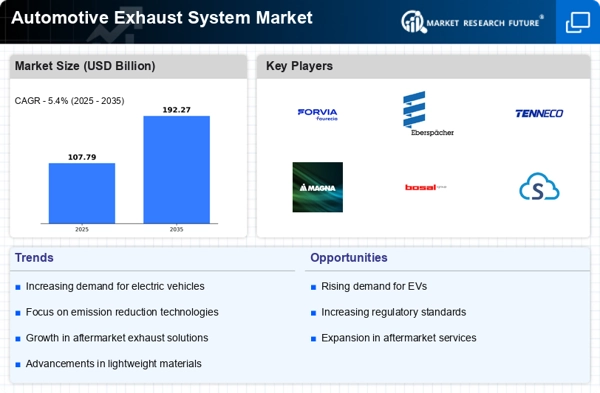
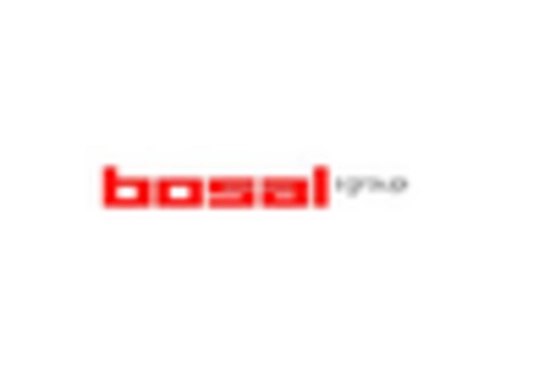
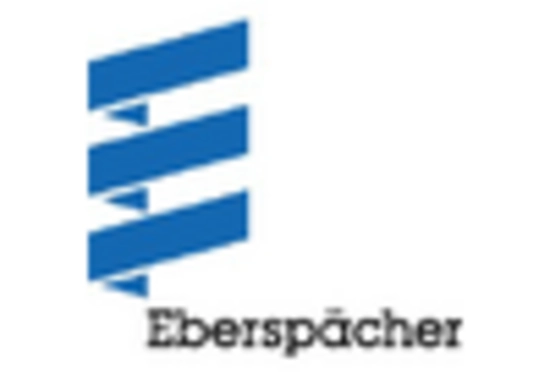
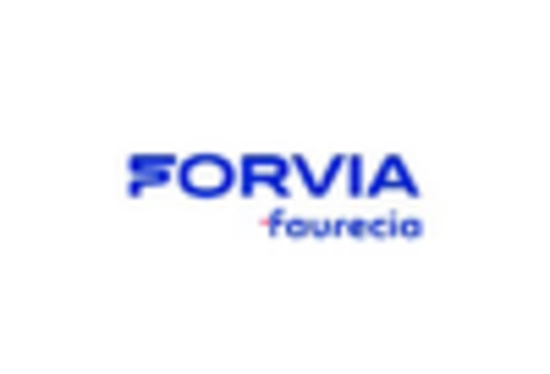
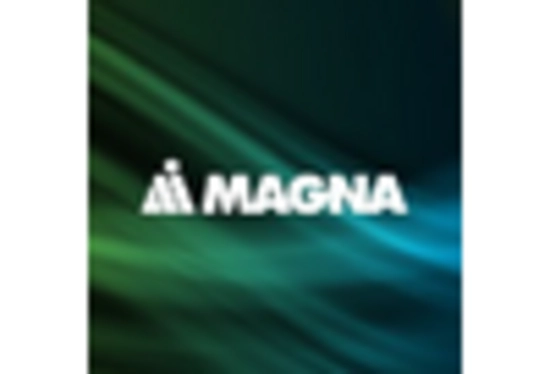

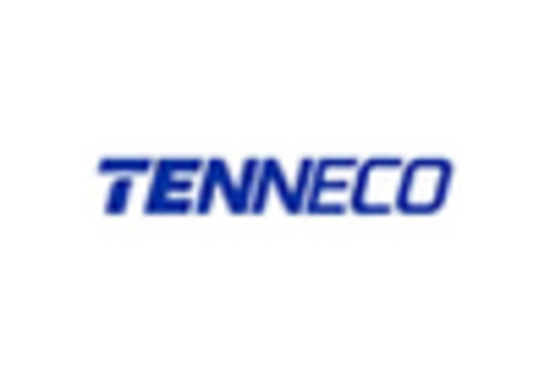

Leave a Comment